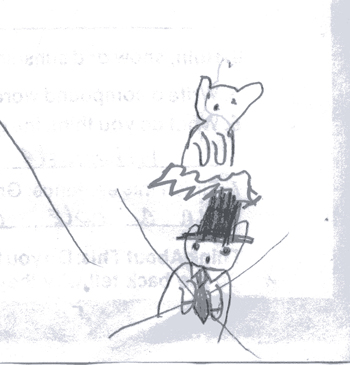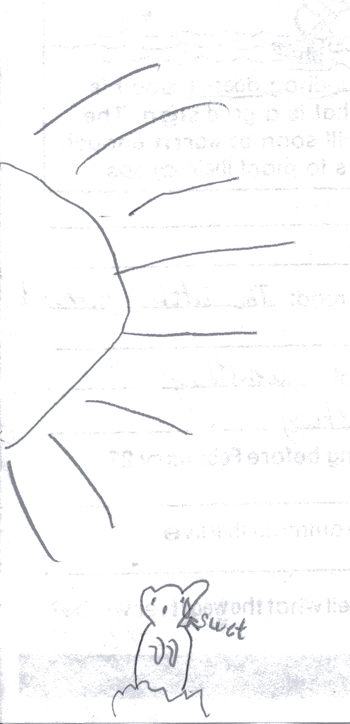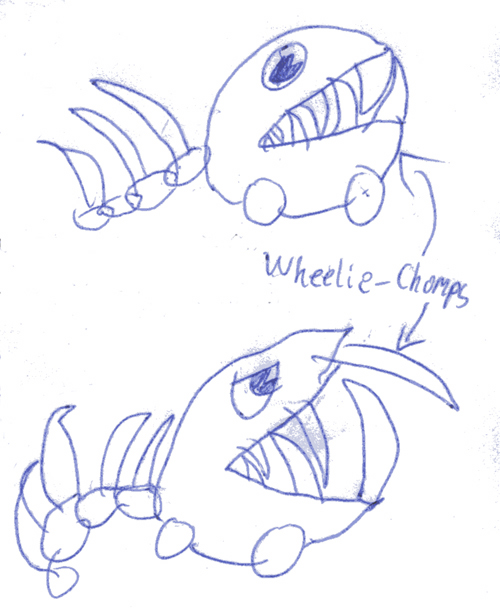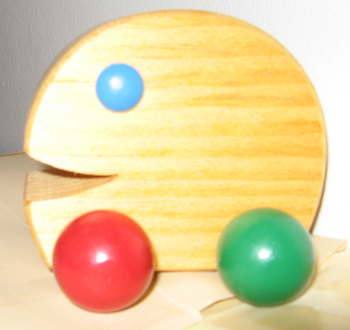
Groundhog’s Day
It’s February again and what do you know — the groundhog has made its appearance in school work!
It doesn’t matter that the sprogs have discussed it before, the curriculum requires an annual reexamination of Punxsutawney Phil’s predictive prowess.
Thankfully, there seems to be at least a little critical thinking involved, to wit:
Younger offspring was asked, Do you think animals can really tell what the weather will be? Tell why they can or cannot.
Younger offspring wrote the following in response:
I think so, because animals can feel stuff also.
I don’t think so, because animals aren’t forecasters.
Nice notice of evidence on both sides, hmm? (I think the contra sentence was meant to indicate that groundhogs and other woodland creatures have no formal training in meteorology with which to take their observations of current conditions and derive reliable predictions about future conditions.)
Naturally, we talked about this at home, which led us to the question of…

Alternative animal systems for weather prediction
Younger offspring: Is Punxsutawney Phil a hundred years old?
Dr. Free-Ride: No, I’m pretty sure he’s not.
Younger offspring: But in school, we learned that the groundhog has been predicting the weather for a hundred years. [Actually, the worksheet said “hundreds of years”, but Younger offspring hit the right order of magnitude.]
Dr. Free-Ride: I’m no groundhog expert, but I’d be surprised if they lived much more than thirty years.
Elder offspring: Maybe if Punxsutawney Phil were a tortoise. They can live a hundred years or more.
Younger offspring: Yeah, and then if he saw his shadow, he could just pull back into his shell.
Dr. Free-Ride: Tortoises move slowly enough that between poking his head out of the shell and looking around for the shadow, clouds might roll in front of the sun and the sun might peek back out from the clouds a few times. I wonder if that would complicate things.
Elder offspring: A tortoise might take long enough to make the forecast that there would actually be more information about temperature and sun going into that forecast.
Younger offspring: And then maybe we wouldn’t be stuck with six more weeks of winter!
Dr. Free-Ride: Really?
Elder offspring: Punxsutawney Phil just predicts the weather. He doesn’t control it.
Younger offspring: Oh yeah. I forgot.
Cloning animals
Elder offspring has to write an essay a week in school. This week, in response to an assignment to write a story about winning an invention contest, Elder offspring described an “Ani-Beam,” a ray-gun like device that can turn objects into animals. The technology (according to the essay) relies on a DNA sample from the sort of animal you hope to create, and then (using methods Elder offspring decided it would not be prudent to share in the essay) the beam produces a clone of that animal. Elder offspring decided that keeping the Ani-Beam out of circulation after it had won the contraption contest would be a good thing, since people might use it to create animals in order to exploit them. Moreover, it had the potential for misuse — say, turning a younger sibling into a chicken.
When asked if cloned animals were importantly different from non-cloned animals, Elder offspring replied, “They have the same DNA as the animals they’re cloned from, but they’re still real animals. I’d still have to be nice to a clone of [Younger offspring].”
Can we take the testimony of mice at face value?
Not all of Elder offspring’s writing is done for school. Recently, I found this brief story:
One sunny day, 5 mice went to the boardwalk.
Only 1 mouse came back.
The mouse claimed he saw giant jumping fish, ghosts, curse moths, and even Wheelie-Chomps!
“I wasn’t scared,” he said. “But when I saw the Wheelie-Chomps, I decided to get out.”
The story was illustrated with this rendering of Wheelie-Chomps:


They actually look like a relative of a wooden toy we have, the “Tumbling Ted,” only more threatening.
I’m inclined to think, given the circumstances, the returning mouse made the right call here.
Why, though, the denial of being scared?
Why not a word about the four mice who didn’t return?
What is it with mice?
Not eating animals doesn’t preclude joking about eating animals.
From the messing-with-one’s-parents files:
Younger offspring: (calling from the kitchen table to the next room) We’re cannibals!
Dr. Free-Ride: That’s nice. I’m staying out here.
Elder offspring: We’re not really cannibals, we’re eating vegetarian ribs.
Dr. Free-Ride: I’m a vegetarian. I’m staying out here.
Younger offspring: No, they’re veggie cow ribs.
Dr. Free-Ride: I thought cows generally were vegetarian. Who gave you cow ribs? You two aren’t supposed to be eating meat!
Younger offspring: [Dr. Free-Ride’s better half] also gave us slices of bird to eat.
Dr. Free-Ride: What?
Younger offspring: Uh huh, nice sliced up kiwi.
Dr. Free-Ride: That’s the fruit. I have a feeling the bird would not be such a bright green inside.


Tell why they can or cannot.
YO response:
I think so, because animals can feel stuff also.
I don’t think so, because animals aren’t forecasters.
This bolsters earlier observations that this child is a born lawyer. In H.S. they frequent the debate team. YO is ready to try out for the team.
“”Ani-Beam,” a ray-gun like device that can turn objects into animals.”
That reminds me of something similar.
I remember being confused by the varying meanings of Kiwi, as well. If I remember right I used to think that they were the eggs of the Kiwi (they were all brown and fuzzy so they could hide, just like the mother bird).
From the movie Groundhog Day:
Phil: There is no way this winter is *ever* going to end as long as that groundhog keeps seeing his shadow. I don’t see any way out of it. He’s got to be stopped. And I have to stop him.
Congrats – Your kids already know more than a TV Weatherman.
(Well the character anyway!)
The “wheelie-chomps” reminded me of Chomp Chains in the video game Mario Kart: http://mariokart.wikia.com/wiki/Chain_Chomp
Hey, I’m a somewhat regular reader of the science blog rss but I only discovered you Friday Sprout series today. I just spent an hour reading through it and I can only say that I love it. Many thanks to you and the offspring!
What is it with mice?
When my brother and I were kids, my brother used to come up with stories about monkeys.
Younger Offspring,
Don’t forget experience. A critter goes through a rainstorm often enough, and he’s smart enough to put two and two together, that critter will figure out how to recognize the signs of a coming rainstorm. So instead of making a wild guess the critter would be making an informed guess.
Here’s something you may not have known about groundhog day, which I didn’t know either until I ran across it in the “collected folk traditions” stacks at St. Deiniol’s Library in Hawarden, Wales (http://www.flintshire.org/deiniol.html).
Apparently, the tradition of sunny or cloudy weather on the 2nd February determining whether winter ends soon or lingers on for another 6 weeks, is one heck of a lot older than Punxatawny Phil. In the Journal of the Folklore Society for Great Britain, in 1840, there was a piece about this tradition being documented in several areas of the British Isles, but apparently being more prevalent in Northeast of Scotland. Here it had (according to the author’s informant) been a tradition for centuries at least, and he couldn’t say how much longer. Lacking groundhogs, however, the animals who got to act out their part in coming out or staying underground were either bears, hedgehogs, or badgers, depending on the exact location.
Groundhogs can live up to 10 years, in captivity and if they’re well taken care of. Obviously, Punxatawny Phil just heard all the stories when he was growing up, to be trained in the tradition. 😉
On another note, I love your Elder offspring’s stories. Kid has definite potential, there!
This is just such good stuff! I hope to see these posts in book-format some day …
You have unusually intelligent and delightful children.